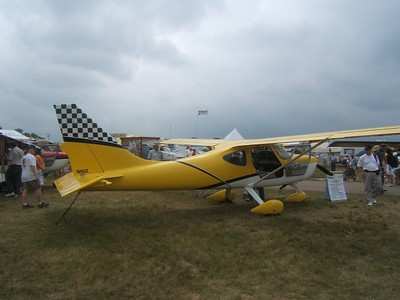Sat, Nov 09, 2013
Airplane Struck Power Lines While On A Positioning Flight Under IFR Conditions
The NTSB has posted its preliminary report from an accident which occurred late last month in Colorado that resulted in the serious injury to the pilot of a Glasair Sportsman GS-2.

According to the report, on October 28, 2013, about 1900 mountain daylight time, the airplane impacted terrain after contact with a utility wire near Castle Rock, Colorado. The commercial pilot sustained serious injuries and the aircraft was substantially damaged. The aircraft was registered to and operated by a private company under the provisions of 14 Code of Federal Regulations Part 91 as a positioning flight. Instrument meteorological conditions prevailed for the flight, which operated on an instrument flight rules flight plan. The flight originated from Yampa Valley Airport (KHDN), Hayden, Colorado at 1743, and Front Range Airport (KFTG), Denver, Colorado was the intended destination.
According to the FAA, the flight was in radio and radar contact with Denver TRACON assisting the pilot through weather into Centennial Airport (KAPA). The airplane was last seen at 6,800 feet mean sea level before radar and radio contact was lost. No distress calls or further communications were received from the accident airplane.
The main wreckage contained all primary structural components and flight control surfaces. Flight control continuity was confirmed from the flight control surfaces to their respective cockpit controls. An engine examination indicated no anomalies with the engine and signatures consistent with propeller rotation at the time of impact were observed.
At 1853, the KAPA automated surface reporting system reported the following weather conditions: wind from 110 degrees true at 6 knots, visibility 2 miles in mist, ceiling overcast at 400 feet above ground level, temperature and dew point -1 degree Celsius, altimeter 30.03 inches of mercury. There were reports of freezing precipitation in the immediate area prior to and after the accident.
(Image from file. Not accident airplane)
More News
Known Traffic With respect to ATC clearances, means aircraft whose altitude, position, and intentions are known to ATC.>[...]
Aero Linx: Aviation Suppliers Association (ASA) Established February 25, 1993, the Aviation Suppliers Association (ASA), based in Washington, D.C., is a not-for-profit association,>[...]
Abeam An aircraft is “abeam” a fix, point, or object when that fix, point, or object is approximately 90 degrees to the right or left of the aircraft track. Abeam indic>[...]
Aero Linx: The Air Charter Safety Alliance The group, called the Air Charter Safety Alliance, will raise awareness of illegal charter flights among potential customers, charter bro>[...]
“For months, ALPA has been sounding the alarm on the ongoing efforts by some aircraft manufacturers to remove pilots from the flight deck and replace them with automation. To>[...]
 ANN's Daily Aero-Term (06.10.24): Known Traffic
ANN's Daily Aero-Term (06.10.24): Known Traffic ANN's Daily Aero-Linx (06.10.24)
ANN's Daily Aero-Linx (06.10.24) ANN's Daily Aero-Term (06.11.24): Abeam
ANN's Daily Aero-Term (06.11.24): Abeam ANN's Daily Aero-Linx (06.11.24)
ANN's Daily Aero-Linx (06.11.24) Aero-News: Quote of the Day (06.11.24)
Aero-News: Quote of the Day (06.11.24)



